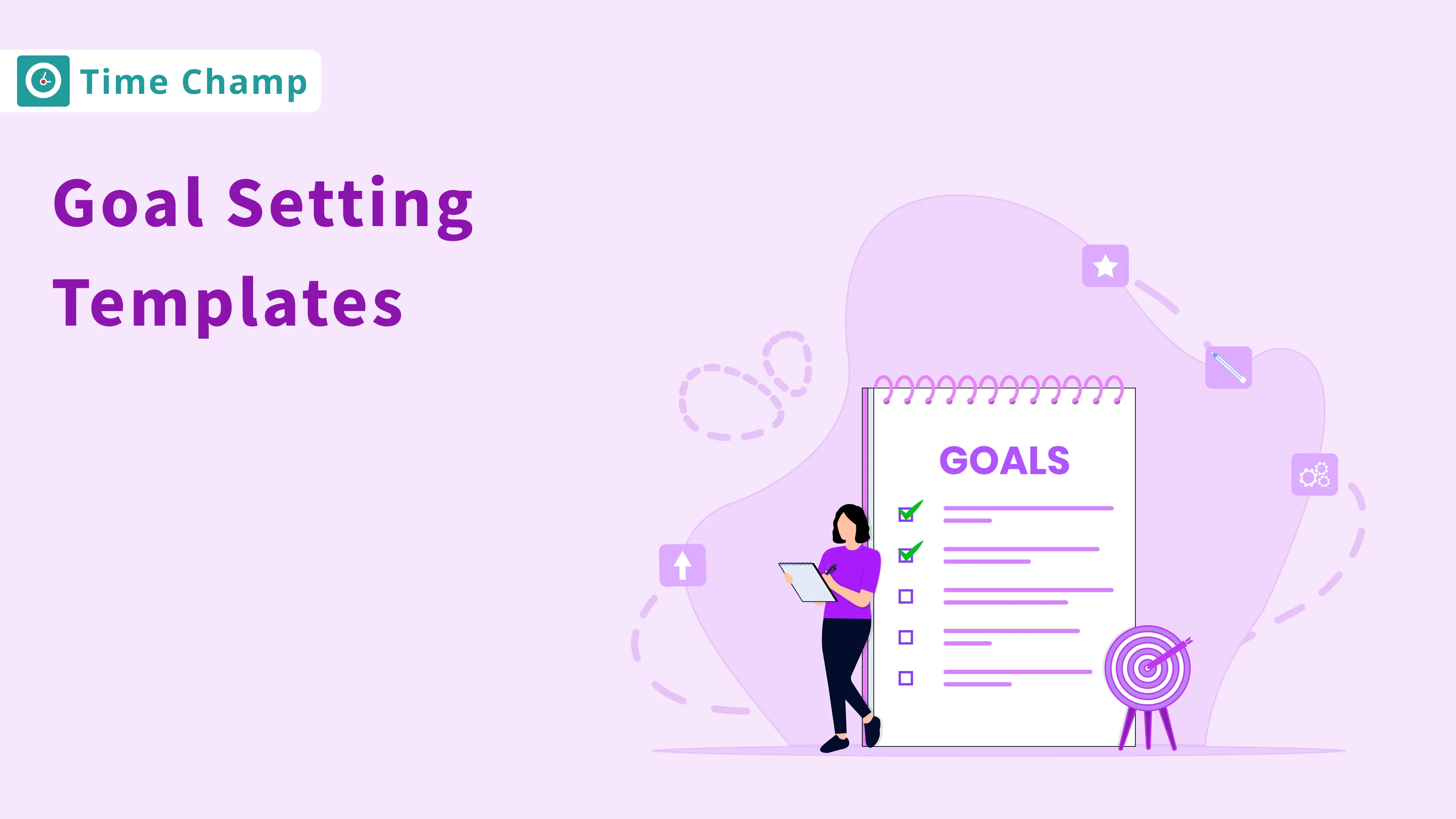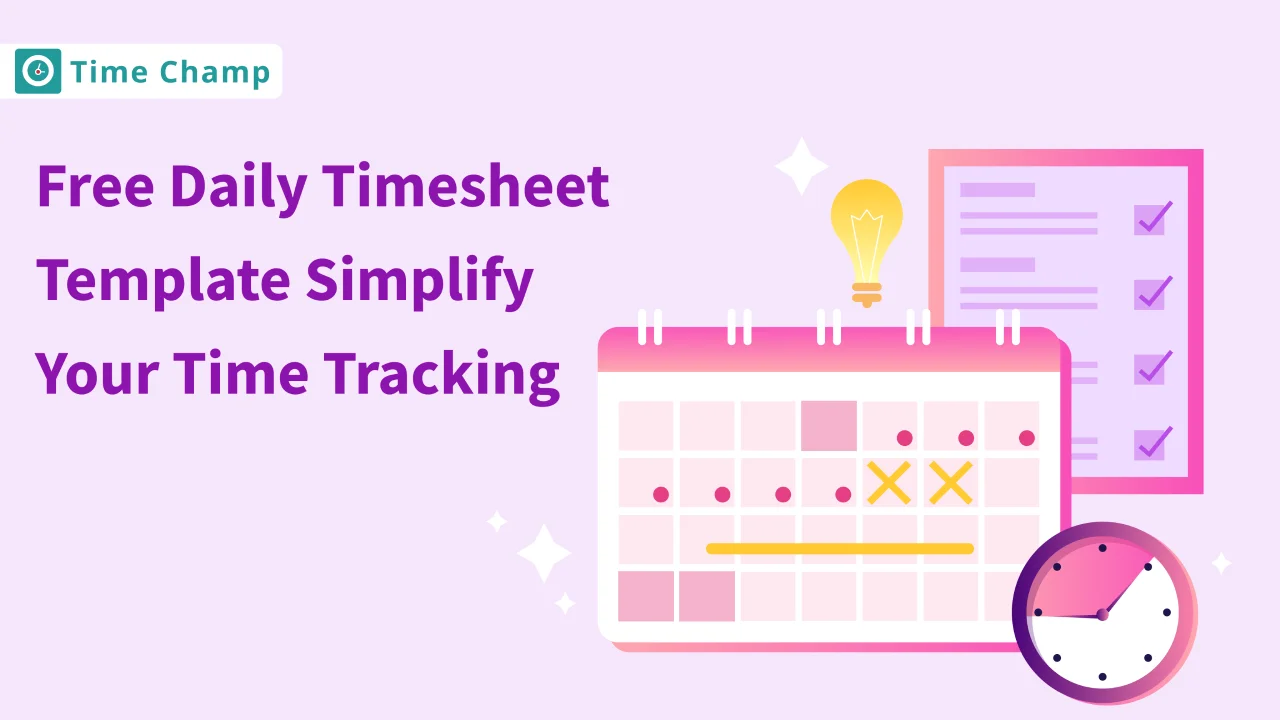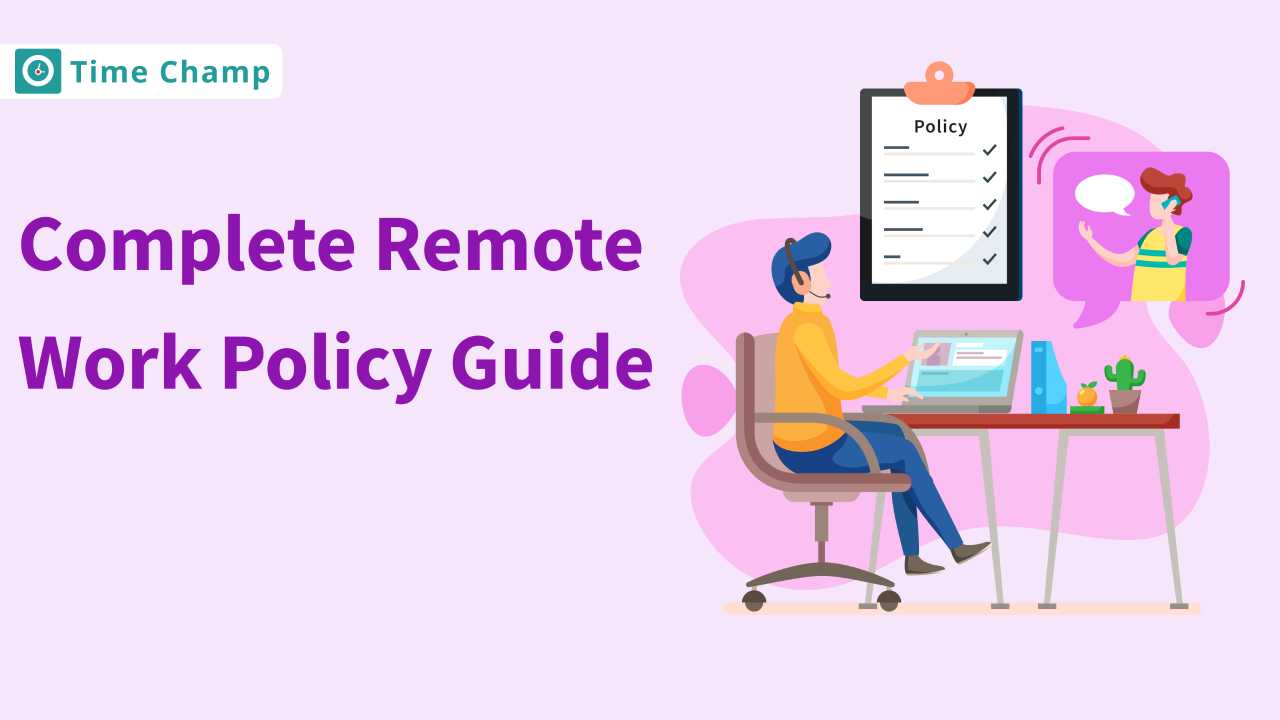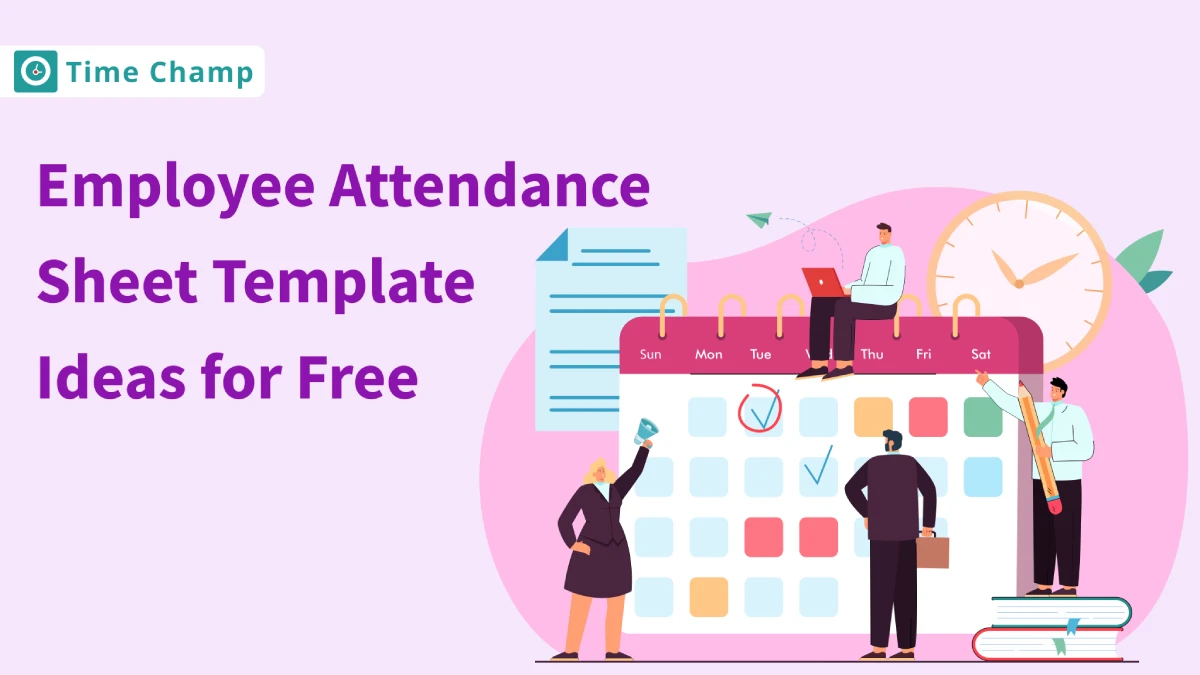Every employer wants employees to have goals, and it is not always easy to ensure they achieve them. This is why having a goal making template can make such a big difference to your organisation. The template provides a clear format for goal setting to your team, as they are not simply listing tasks but creating a framework they can work out of.
In this blog, I’ve put together 10 free templates designed especially for workplace use. Every goal setting plan template is available in PDF, Excel, and Word, allowing you to select which format best suits your processes. Whether you’re setting short-term performance targets or long-term strategic goals, these templates will give you and your employees a solid foundation to succeed.
What Are the 10 Types of Goal Setting Templates
Everyorganisation has different needs when it comes to setting goals. A single template does not suit all when it comes to goal setting in the workplace. Some employees need a simple way to track their personal progress, while you often require more structured tools to connect team efforts with company targets.
1. Employee Goal Setting Template
The employee goal setting template allows you to assist your team in setting clear and attainable goals. Unlike leaving the goals unspecific, this template enables the employees to state specific objectives, establish timeframes, and monitor their achievement on a step-by-step basis. As an employer, it is a clear-cut method to employee performance according to company priorities and monitor progress with check-ins.

Key Features:
- Goal Listing: Space for employees to write down specific objectives.
- Measurable Targets: Define clear milestones or numbers for tracking.
- Deadlines: Add start and end dates to keep goals on schedule.
- Progress Tracking: Monitor updates and completion status at a glance.
- Manager Notes: Section to capture your feedback during reviews.
Best For:
Ideal for HR managers, team leaders, and department heads who want to set and measure individual employee goals in alignment with company priorities. It’s also great for employees preparing for performance reviews or annual evaluations.
2. Staff Goal Setting Template
The staff goal setting template helps you develop team-based goals instead of being focused on individuals. It’s a practical tool to make sure your staff are working toward the same objectives while still having clarity on their specific contributions. With this template, you can establish common goals, map duties, and monitor team progress.

Key Features:
- Team Goals: A section to define overall objectives for staff groups.
- Role Allocation: Assign responsibilities to different team members.
- Milestones: Break down goals into achievable stages for the team.
- Tracking Columns: Monitor team progress and completion status.
- Review Notes: Space for feedback on team performance and collaboration.
Best For:
Best suited for team supervisors, operations managers, and department coordinators who focus on setting collective team goals and ensuring group accountability toward shared objectives.
3. SMART Goal Setting Template
One of the best frameworks that you could apply to assist employees in having perfect goals is the SMART goal making template. Rather than having generic goals, this template helps your team to make their goals specific, measurable, achievable, relevant, and time-bound. This format provides employees with clear visibility into their goals, the criteria for measuring success, and the timeline for achieving it. This simplifies the process of tracking the performance and reviews of progress.

Key Features:
- Specific: Employees define clear, detailed objectives instead of broad statements.
- Measurable: Space to include numbers, KPIs, or milestones to track results.
- Achievable: Ensures goals are realistic and within the employee’s capacity.
- Relevant: Connects individual objectives with team and organisational priorities.
- Time-bound: Deadlines to set urgency and maintain accountability.
Best For:
Perfect for managers, mentors, and employees looking to create structured, measurable, and achievable goals using the SMART framework. Also useful for trainers and HR professionals conducting goal-setting workshops.
4. Goal Development Template
The goal development template provides you with an organised method of guiding employees in crafting their goals step by step. Instead of simply putting down an end target, this template allows employees to consider the steps, resources, and milestones that must be reached to accomplish it. It ensures that goals are backed with a clear plan for execution.

Key Features:
- Goal Definition: Allows employees to clearly outline their main objectives, ensuring focus and alignment.
- Action Steps: Provides a structured way to break larger goals into smaller, achievable tasks.
- Resources Needed: Helps identify the tools, training, or support required to accomplish goals effectively.
- Milestones: Establishes key checkpoints to monitor progress and recognise achievements along the way.
- Review Section: Creates space for feedback and adjustments to keep goals aligned and on track.
Best For:
Designed for project managers, career coaches, and employees who want to develop a clear action plan to achieve specific goals. Great for personal development plans and performance improvement programs.
5. Goal Tracker Template
The goal tracker template aims to keep you and your employees on track with progress after setting goals. Whereas other templates are aimed at goal creation, this one is entirely about result tracking. It provides you with a clear picture of what has already been done, what is being done, and where there might be delays. By using this template, you can easily review performance and make sure employees remain accountable and focused.
Key Features:
- Goal Overview: Provides a centralised view of all current goals for easy tracking and management.
- Status Updates: Allows employees to mark progress as pending, ongoing, or completed for better visibility.
- Timeline Tracking: Helps monitor whether goals are being met within the planned deadlines.
- Performance Metrics: Enables the addition of measurable KPIs or figures to evaluate goal achievement.
- Review Notes: Offers space to record observations and insights for future reviews or performance discussions.
Best For:
Ideal for performance analysts, team leaders, and employees who need to monitor goal progress regularly. Excellent for HR dashboards or monthly progress reviews to maintain accountability.
6. OKRs Template
The OKRs (objectives and key results) template will allow you to establish high-end targets for your teams and connect them to outcome measurements. Unlike simple goal-setting formats, OKRs challenge employees to look beyond the day-to-day tasks and concentrate on the outcomes that actually make a difference in the organisation.

Key Features:
- Objective Definition: Helps employees clearly define inspiring, outcome-focused objectives aligned with organisational vision.
- Key Results Tracking: Enables the addition of measurable, quantifiable results to assess progress toward each objective.
- Alignment Mapping: Connects individual and team OKRs to departmental and company-wide goals for unified direction.
- Progress Insights: Provides visual indicators to monitor performance trends and identify challenges early.
- Review Section: Offers space for quarterly or mid-cycle evaluations, reflections, and planning next steps for improvement.
Best For:
Suited for executive teams, department heads, and startup founders aiming to align team objectives with measurable company outcomes. Also beneficial for fast-growing organisations tracking quarterly results.
7. Annual Goal Setting Template
The annual goal setting template can assist you and your employees in setting long-term goals that are aligned with your organisation's annual goals. It offers a clear method of prioritising, establishing milestones, and assessing the progress of the year. With this template, you can keep employees focused on big-picture goals while tracking their performance across different quarters. It’s ideal for performance reviews, strategic planning, and ensuring that every team’s efforts contribute to overall company growth.

Key Features:
- Yearly Objectives: Provides space to outline key goals for the year, giving employees a clear sense of long-term direction.
- Quarterly Milestones: Helps break down yearly objectives into quarterly checkpoints for easier tracking and consistent progress.
- Performance Indicators: Allows the inclusion of measurable KPIs to assess goal achievement and performance impact.
- Progress Tracker: Enables ongoing monitoring of accomplishments and highlights areas that need improvement.
- Review Notes: Offers a section for end-of-year evaluations, reflections, and constructive feedback to support growth.
Best For:
Perfect for senior management, HR professionals, and team leaders involved in yearly performance planning and strategic goal reviews. Also helpful for organisations conducting annual appraisals.
8. Vision Board Template
The vision board template is an imaginative and inspirational method to assist your employees in visualising their professional ambitions. It goes beyond numbers and deadlines, allowing teams to map out what success looks like, whether it’s achieving sales milestones, developing leadership skills, or reaching career growth targets.

Key Features:
- Visual Goal Layout: Provides space to add images, quotes, and keywords that visually represent employee goals and aspirations.
- Focus Areas: Helps organise goals into meaningful categories such as career growth, learning, or performance development.
- Inspiration Section: Encourages motivation by including inspirational quotes or company values that align with personal and organisational objectives.
- Milestone Tags: Enables the use of icons or labels to easily track key achievements and progress milestones.
- Review Space: Offers a dedicated area for team discussions, feedback, and reflections on progress and goal alignment.
Best For:
Great for creative teams, career coaches, and individuals who want to visualise career growth or motivational goals. Also ideal for workshops, employee engagement sessions, and leadership development programs.
9. Business Plan Template
The business plan template is designed to assist you and your team in outlining company goals and formulating a clear action plan to accomplish them. It provides a structured approach to defining objectives, developing strategies, and tracking progress, ensuring that every team member aligns with the company’s growth direction.
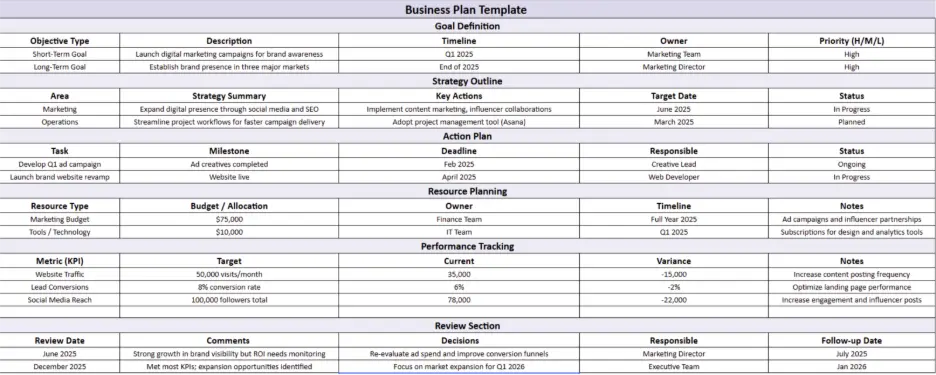
Key Features:
- Goal Definition: Sections to identify short-term and long-term business objectives.
- Strategy Outline: Space to map out marketing, operational, and financial strategies.
- Action Steps: Clearly defined tasks and milestones to guide execution.
- Resource Planning: Dedicated areas to allocate budgets, assign responsibilities, and manage timelines.
- Performance Tracking: Built-in metrics and review points to measure progress and adjust strategies.
- Review Section:: Space for team discussions and updates to refine the plan over time.
Best For:
Tailored for entrepreneurs, startup founders, and business strategists creating or refining a comprehensive business plan. Also valuable for students in business studies and small business owners developing growth roadmaps.
10. Project Charter Template
The project charter template is designed to help you and your team define the foundation of a project by clearly outlining its objectives, scope, and stakeholders. It serves as an essential guide that establishes direction, accountability, and alignment before execution begins, ensuring all team members understand the project’s purpose and expected outcomes.

Key Features:
- Project Overview: Provides space to record essential project details such as project name, manager, department, start and end dates, and version updates for easy reference.
- Project Purpose & Objectives: Helps define the main project goals and key objectives to ensure clarity and alignment among stakeholders.
- Stakeholders: Lists key stakeholders along with their roles, departments, and contact details to establish accountability and smooth communication.
- Deliverables & Milestones: Highlights the major deliverables and key milestones to track project progress and ensure timely completion.
- Risks & Mitigation: Identifies potential risks, their impact, and corresponding mitigation strategies to manage challenges effectively.
Best For:
Ideal for project managers, team leads, and stakeholders defining project scope, objectives, and responsibilities. Also suitable for consultants and coordinators who need a formal project initiation document.
What Are the Pros and Cons of Goal Setting Templates
Goal setting templates are an easy but powerful method of keeping things in order and on track. They bring structure to your ideas, making it easier to turn goals into clear, actionable plans. No matter what kind of targets you are trying to achieve, whether it is company-wide or personal growth, all these templates help employees stay on track, work toward their goals effectively, and remain accountable throughout the process.
That said, templates aren’t a one-size-fits-all solution. While they’re a great place to start, they might not work perfectly for every situation. Knowing their strengths and limitations can help you adjust them to fit your team’s style and make them truly useful.
| Pros | Cons |
|---|---|
| Provide structure and help define clear goals and outcomes. | May not be flexible enough for every project or goal type. |
| Create consistency across teams and keep everyone aligned. | Can lead to focusing more on filling out the template than meaningful discussions. |
| Make it easier to assign ownership and track responsibilities. | Might not fully capture unique goals or creative approaches. |
| Save time with a ready-made framework that guides the process. | Require regular updates to stay useful and relevant. |
| Support progress tracking and performance reviews over time. | Can feel repetitive if used too often without adjustments. |
How Does Time Champ Help Organisations to Set Goals
Time Champ helps teams create clear goals by providing how work happens every day. It monitors data on how time is spent, task progress, and team productivity, giving you an idea of where things stand. The goal templates provide insights into employee progress, performance trends, and alignment with organisational objectives. With these insights, you can set practical, measurable goals that match their capacity and priorities. This approach makes planning more focused and ensures every goal is based on real performance, not assumptions.
Once goals are set, Time Champ makes it easy to track progress and stay aligned. Teams can see what’s moving, what needs attention, and where changes might be needed. This level of visibility builds accountability and keeps everyone focused on shared outcomes.
Final Thoughts
Goal setting templates are not merely planning tools, but serve as a foundation for turning ideas into amazing results. By using the right template, your teams can align priorities, track progress, and stay accountable through every stage of their journey. Regardless of whether you are setting employee objectives, monitoring OKRs, or creating business plans, these ready-to-use templates make everything organised and simple to handle.
Frequently Asked Questions
Yes, all the templates are customisable. They can be easily modified to suit the goals and priorities of your team, regardless of whether you are in HR, marketing, sales, or operations.
Ideally, templates should be reviewed and updated every quarter to ensure they match changing priorities, team performance, and business goals.
A goal is the overall result you want to achieve, while an objective is a specific, measurable step that helps you reach that goal. Goals give direction, and objectives define how to get there.
Yes, you can, although most of these templates are designed for workplaces, some templates, like the SMART goal and vision board templates, work perfectly for personal growth and self-improvement goals.
They provide a clear record of progress, completed milestones, and measurable outcomes, making reviews more objective, data-driven, and fair.
